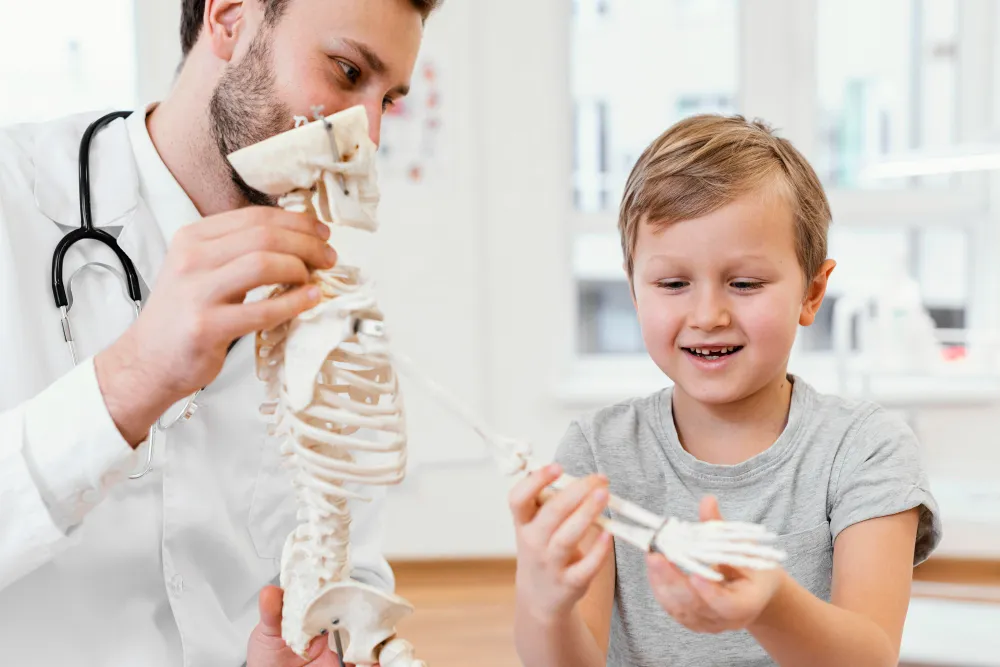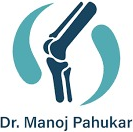Pediatric Orthopedics in Nagpur
Specialized care for children’s bone, joint, and muscle conditions, from newborns to adolescents, ensuring healthy growth and active development.
What is Pediatric Orthopedics?
Pediatric Orthopedics is a specialized branch of orthopedics dedicated to diagnosing, treating, and managing musculoskeletal problems in children, from newborns to adolescents. It addresses a wide range of conditions, including congenital deformities, growth-related disorders, traumatic injuries, and infections affecting bones, joints, and muscles.
Because children’s bones and joints are still developing, their orthopedic care requires a different approach than adults. Pediatric orthopedic specialists use tailored treatment plans that support healthy growth, restore mobility, and prevent long-term complications, ensuring young patients can lead active, pain-free lives.

Common Conditions in Pediatric Orthopedics
Congenital Conditions
These are present at birth and may affect the structure and function of bones, joints, or limbs. Early intervention can prevent long‑term disability.
- Developmental Dysplasia of the Hip (DDH): Abnormal development of the hip joint.
- Clubfoot (Talipes Equinovarus): A condition where a baby’s foot is twisted out of shape or position.
- Congenital Limb Deficiencies: Absence or underdevelopment of a limb at birth.
Growth‑Related Disorders
These conditions develop as a child grows and can affect posture, movement, and limb alignment.
- Scoliosis: Abnormal lateral curvature of the spine.
- Leg Length Discrepancy: A Significant difference in the lengths of the legs.
- Blount’s Disease: A Growth disorder of the shin bone (tibia) that causes the lower leg to angle inward.
Trauma and Injuries
- Fractures: Broken bones resulting from falls, sports injuries, or accidents.
- Growth Plate Injuries: Fractures that affect the growing areas of children’s bones.
- Dislocations: Joints forced out of their normal position.
Infections and Inflammatory Conditions
These can damage bone and joint tissue, sometimes requiring urgent treatment to avoid lasting effects.
- Osteomyelitis: Infection of the bone.
- Septic Arthritis: Infection in a joint.
- Juvenile Idiopathic Arthritis (JIA): A type of arthritis that affects children.
Neuromuscular Disorders
Conditions affecting nerves and muscles often impact movement, coordination, and muscle strength.
- Cerebral Palsy: A group of disorders affecting movement and muscle tone, or posture.
- Muscular Dystrophy: A group of inherited diseases causing progressive muscle weakness.
Diagnostic Methods
Accurate diagnosis in pediatric orthopedics combines physical assessment with imaging and lab tests to identify the exact cause of a child’s symptoms. This ensures timely and effective treatment planning.
Clinical Evaluation
Involves a hands‑on assessment to understand symptoms, movement patterns, and physical signs. Detailed medical history and physical examination to assess symptoms and physical signs.
Imaging Studies
- X‑rays: Primary tool for evaluating bone abnormalities and injuries.
- Ultrasound: Useful for soft tissue evaluation and in conditions like DDH.
- MRI and CT Scans: Detailed imaging for complex conditions and soft tissue evaluation.
- Bone Scans: To detect infections, tumors, and other bone abnormalities.
Laboratory Tests
Identifies underlying infections, inflammation, or systemic conditions that may affect bone and joint health. Blood tests provide key insights to guide accurate diagnosis and treatment planning.
Treatment Approaches in Pediatric Orthopaedics
Pediatric orthopaedic treatment focuses on restoring normal function, supporting healthy growth, and preventing long‑term complications. Management plans are tailored to each child’s condition, age, and stage of development.
Non‑Surgical Management
These methods aim to correct or control conditions without invasive procedures, often serving as the first line of treatment.
Physical Therapy and Rehabilitation
- Exercises and therapies to improve strength, flexibility, and function.
Bracing and Casting
- Use of braces, splints, and casts to correct deformities and stabilize injuries.
Medications
- Pain relief medications, antibiotics for infections, and anti‑inflammatory drugs for conditions like JIA.
Orthotic Devices
- Custom‑made devices to support, align, or improve the function of a limb or the spine.
Observation and Monitoring
- Regular follow‑ups to monitor growth and development, especially for conditions that may change over time.
Surgical Management
Surgery is recommended when non‑surgical methods are ineffective or when immediate correction is necessary to restore function.
Fracture Fixation
- Closed Reduction and Casting: Non‑invasive realignment and stabilization.
- Internal Fixation (ORIF): Surgical alignment and fixation with plates, screws, or rods.
Corrective Surgeries
- Osteotomy: Surgical cutting and realignment of bones.
- Spinal Fusion: Surgery to correct severe scoliosis or other spinal deformities.
- Limb Lengthening Procedures: Techniques to correct leg length discrepancies.
Treatment of Congenital Conditions
- Ponseti Method for Clubfoot: A Series of casts and braces to correct clubfoot.
- Surgical Release for Clubfoot: Surgery to lengthen or release tight tendons and ligaments.
Management of Neuromuscular Disorders
- Selective Dorsal Rhizotomy: Surgery to reduce spasticity in cerebral palsy.
- Tendon Transfers: Procedures to improve muscle function and balance.
Infection and Tumor Management
- Debridement: Removal of infected or dead tissue.
- Biopsy and Resection: Removal of bone tumors and infected areas.
Rehabilitation and Follow‑Up
Rehabilitation in pediatric orthopaedics focuses on complete recovery, long‑term function, and supporting healthy growth after treatment. Ongoing follow‑up ensures early detection of complications and sustained progress.
Postoperative Care
- Pain management, wound care, and prevention of complications.
- Early mobilization and physical therapy.
Long‑Term Monitoring
- Regular check‑ups to monitor growth, healing, and function.
- Adjustments to braces, orthotic devices, and therapy programs as needed.
Family and Patient Education
- Educating families about the condition, treatment options, and home care.
- Guidance on physical activities, lifestyle modifications, and adherence to treatment plans.
Pediatric orthopedics is a specialized field dedicated to addressing the unique musculoskeletal issues in children. Early diagnosis, tailored treatment plans, and comprehensive care are crucial for achieving the best outcomes. By combining non-surgical and surgical approaches, and emphasizing rehabilitation and long-term monitoring, pediatric orthopedic care aims to restore function, enhance growth and development, and improve the quality of life for young patients.
Book Your Pediatric Orthopedic Consultation in Nagpur
Get expert care for children’s bone, joint, and muscle conditions from Dr. Manoj Pahukar, ensuring healthy growth, early correction, and an active, pain‑free future.
Frequently Asked Questions
At what age should a child first see a pediatric orthopedic specialist?
If you notice any concerns with your child’s posture, walking pattern, limb alignment, or joint movement, even in infancy, it’s best to consult early. Early evaluation ensures timely treatment during key growth phases.
Do children recover faster from orthopedic injuries than adults?
In many cases, yes. Children’s bones heal more quickly because they are still growing, but this also means proper alignment and monitoring are critical to avoid long‑term issues.
Can mild scoliosis in children improve without surgery?
Yes, mild curves can often be managed with observation, bracing, and physiotherapy. Regular follow‑ups help track whether the curve is progressing.
Are sports injuries common in children and teens?
Yes. Active children, particularly those involved in competitive sports, are at risk of fractures, sprains, or growth plate injuries. Prompt treatment helps ensure safe return to activity and prevents re‑injury.
What role does nutrition play in bone health for children?
A balanced diet rich in calcium, vitamin D, and protein supports strong bones and faster healing from injuries or surgeries. Your doctor may recommend dietary adjustments or supplements if needed.

